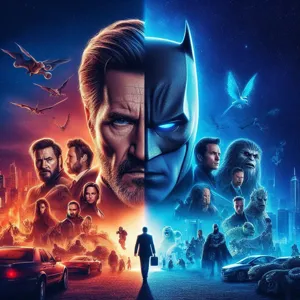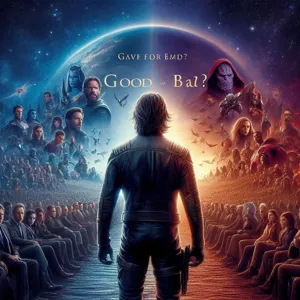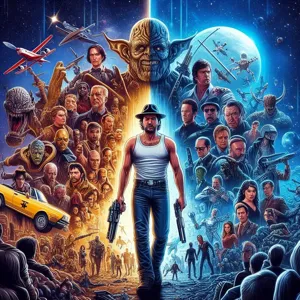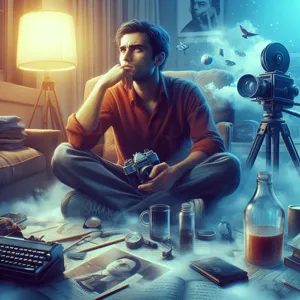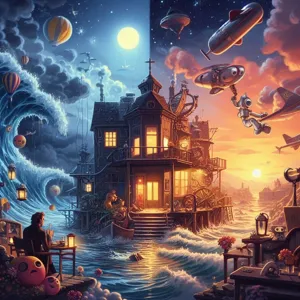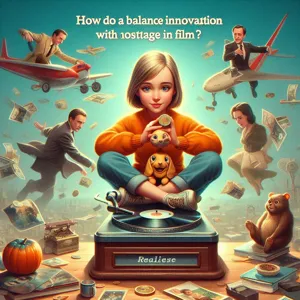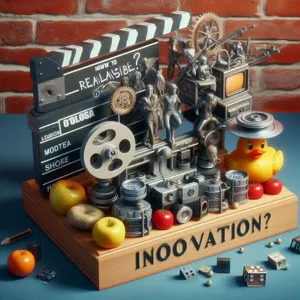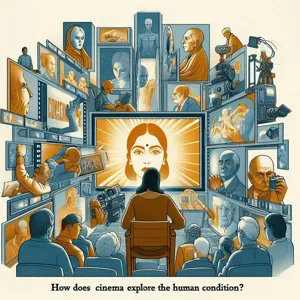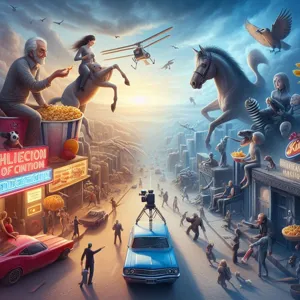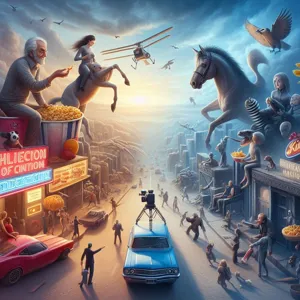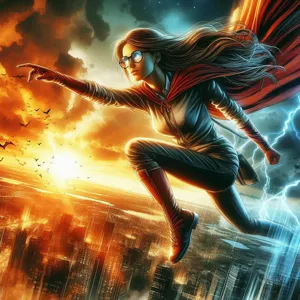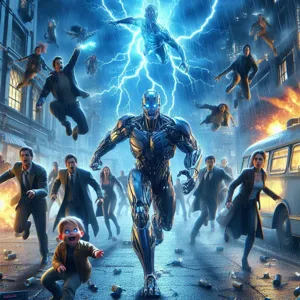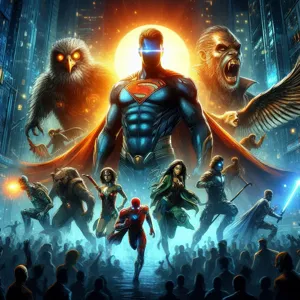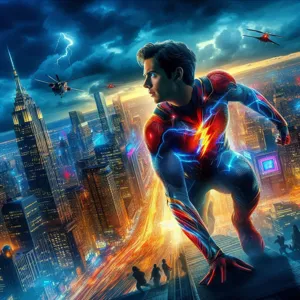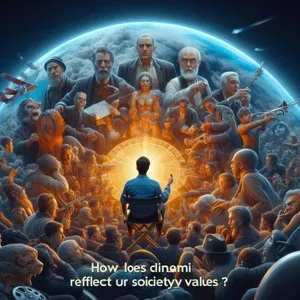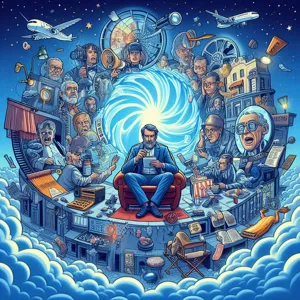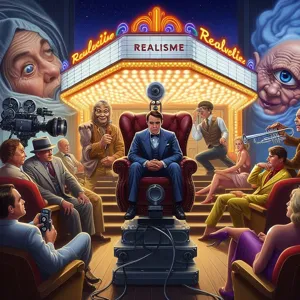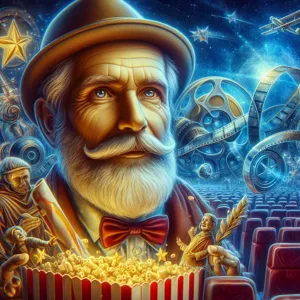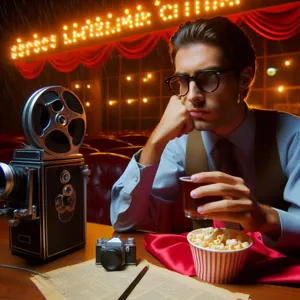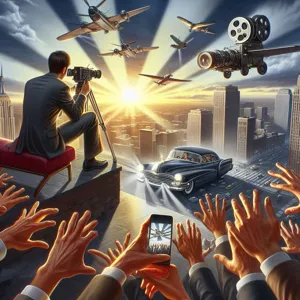In an increasingly interconnected world, film serves as a powerful medium that transcends borders and brings diverse cultures right into our living rooms.
“Cinematic Journeys: Exploring Cultural Empathy Through Film” invites you to embark on an enlightening exploration of how storytelling through the lens of cinema can foster understanding, compassion, and a deeper appreciation for the human experience. Movies are not just entertainment; they are windows into the lives, struggles, and triumphs of people from all walks of life. As we journey through various genres and narratives—from poignant documentaries to heartwarming dramas—this blog post will uncover how films can challenge preconceived notions, bridge cultural divides, and cultivate a sense of empathy that is essential in our global society. Join us as we delve into the art of storytelling, revealing how cinematic masterpieces can inspire us to connect with others and truly understand what it means to walk in someone else’s shoes.
1. Introduction to Cinematic Journeys
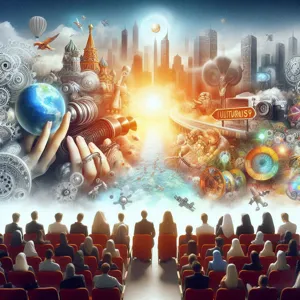
In a world increasingly defined by cultural divides, film serves as a powerful medium to bridge gaps and foster understanding. “Cinematic Journeys: Exploring Cultural Empathy Through Film” invites you to embark on an exploration of how cinema transcends borders, offering viewers a window into the lives, struggles, and triumphs of people from diverse backgrounds. Movies have the intrinsic ability to evoke emotions and challenge perceptions, making them an ideal vessel for cultivating empathy.
As we delve into the landscape of global cinema, we will discover how filmmakers craft narratives that illuminate the rich tapestry of human experience. From heartwarming tales of friendship to poignant explorations of societal issues, each film presents a unique opportunity to step into someone else’s shoes, if only for a fleeting moment. This journey is not just about entertainment; it’s about understanding, connecting, and embracing the vast array of cultures that populate our planet.
Through the lens of various directors and storytellers, we will analyze films that highlight cultural nuances, provoke thought, and inspire dialogues about our shared humanity. By embracing these cinematic narratives, we can expand our worldview, challenge stereotypes, and ultimately, nurture a deeper sense of empathy that extends beyond the screen. Join us as we embark on this cinematic journey, where every frame tells a story worth hearing, and every story has the potential to change the way we see one another.
2. Defining Cultural Empathy in Film
Cultural empathy in film is a nuanced concept that extends far beyond mere representation. At its core, it involves understanding and appreciating the intricate layers of different cultures, beliefs, and experiences as portrayed through cinematic storytelling. This empathetic lens allows audiences to connect with characters and narratives that may initially seem foreign to them, fostering a sense of shared humanity and interconnectedness.
When a film embodies cultural empathy, it invites viewers into the lives of its characters, immersing them in diverse cultural contexts and perspectives. Whether it’s through the vibrant colors of a traditional festival, the poignant struggles of marginalized communities, or the subtle nuances of everyday interactions, these films create a bridge between disparate worlds. They challenge viewers to step outside their comfort zones and confront their preconceived notions, ultimately leading to a deeper understanding of the human experience.
Take, for example, films like “The Lunchbox,” which beautifully captures the essence of Mumbai’s bustling food culture while exploring themes of loneliness and connection. Or consider “Parasite,” a gripping narrative that delves into class disparities in South Korea. Both films not only entertain but also serve as powerful tools for cultural empathy, encouraging audiences to reflect on their own lives and the social dynamics that shape them.
Moreover, cultural empathy in film is not just about showcasing diversity; it’s about authenticity. Filmmakers who prioritize genuine representation—by collaborating with individuals from the cultures they depict or engaging in thorough research—create narratives that resonate on a profound level. This authenticity fosters respect and understanding, allowing viewers to engage with the film in a meaningful way.
As we navigate an increasingly globalized world, the role of cultural empathy in film becomes ever more vital. It nurtures dialogue, promotes inclusivity, and cultivates a greater appreciation for the rich tapestry of human experiences. Through the lens of cinema, we are not just spectators, but participants in a shared journey toward understanding and compassion.
3. The Power of Storytelling in Fostering Understanding

Storytelling has long been a potent vehicle for conveying complex human experiences and emotions, and in the realm of film, its power is magnified. Through carefully crafted narratives, filmmakers have the ability to transport audiences into the lives of individuals vastly different from themselves, fostering a deep sense of cultural empathy. When we watch a film, we are not just passive observers; we become participants in a shared journey, experiencing the joys, struggles, and nuances of another person’s world.
Consider the way a filmmaker weaves together the threads of different cultures, using visuals, dialogue, and sound to create an immersive experience. A poignant story can break down barriers, shedding light on cultural practices, social issues, and the universal human condition. For instance, films like *The Kite Runner* and *Parasite* provide a lens through which viewers can explore themes of friendship, betrayal, class struggles, and redemption, prompting us to reflect on our own beliefs and biases.
Moreover, storytelling in film often transcends language and geographical borders, making it a powerful tool for global understanding. Subtitled films allow audiences to engage with diverse voices and perspectives, while visual storytelling communicates emotions that words sometimes cannot capture. This connection, born from empathy and shared experiences, can lead to greater awareness and appreciation of cultural differences, ultimately fostering a more inclusive worldview.
In a time when divisions seem to dominate our narratives, films that emphasize the power of storytelling can serve as bridges, uniting us through shared experiences and emotions. By inviting audiences to step into the shoes of others, cinema has the unique ability to cultivate compassion and understanding, reminding us that, at our core, we are all part of the same human family. As we explore these cinematic journeys, we are not only entertained but also challenged to grow, learn, and embrace the rich tapestry of human experiences that define our collective existence.
4. Iconic Films that Highlight Cultural Diversity
When it comes to exploring cultural empathy through the lens of cinema, certain films stand out as powerful storytellers that bridge divides and foster understanding. These iconic films are not just entertainment; they serve as portals into the rich tapestry of human experience, allowing audiences to step into the shoes of others and gain insights into diverse cultures.
One such film is *Slumdog Millionaire*, which takes viewers on a gripping journey through the vibrant streets of Mumbai. The film intricately weaves together themes of poverty, destiny, and love, while showcasing the resilience of the human spirit. Through its engaging narrative and stunning visuals, audiences are invited to witness the stark realities faced by millions, thus sparking conversations about socio-economic disparities and cultural richness.
Another remarkable example is *Crouching Tiger, Hidden Dragon*, a cinematic masterpiece that not only thrills with its breathtaking martial arts choreography but also delves into themes of honor, tradition, and unfulfilled desires within Chinese culture. The film’s lush landscapes and poignant characters allow viewers to engage with a culture that might be vastly different from their own, promoting a deeper appreciation for its history and values.
*The Namesake* offers a poignant exploration of identity and belonging through the eyes of a first-generation Indian-American. This film beautifully captures the struggle of balancing cultural heritage with the desire for acceptance in a new world. By following the protagonist’s journey, viewers are challenged to confront their own perceptions of culture, immigration, and the complexities of family ties.
Lastly, *Black Panther* stands as a groundbreaking film that not only celebrates African culture but also addresses themes of power, responsibility, and the African diaspora. Through its rich storytelling and dynamic characters, the film invites audiences to celebrate diversity while engaging in critical conversations about representation and unity.
These films, among many others, serve as vital reminders of the importance of cultural empathy in our increasingly interconnected world. By immersing ourselves in the stories and experiences of others, we not only expand our worldview but also cultivate compassion and understanding—essential ingredients for a more harmonious global community.
5. Analyzing the Role of Film in Shaping Perspectives
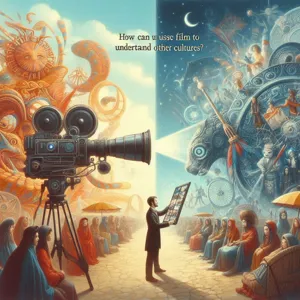
Film has an unparalleled ability to shape our perspectives, providing a lens through which we can explore cultures, experiences, and emotions that may be vastly different from our own. Through various storytelling techniques, filmmakers craft narratives that invite audiences into the lives of characters from diverse backgrounds, fostering a deeper understanding of their struggles, triumphs, and everyday realities.
Consider the power of a well-told story; it can transport us to bustling markets in Morocco, serene temples in Japan, or the vibrant streets of Rio de Janeiro. Each frame presents an opportunity to immerse ourselves in the sights and sounds of a different world, igniting curiosity and empathy. Films such as “Parasite,” “Roma,” and “The Farewell” exemplify how cinema can break down cultural barriers, revealing the shared humanity that exists beyond geographical borders.
Moreover, film serves as a historical document, preserving cultural narratives that might otherwise fade into obscurity. By examining the cinematic representation of particular communities, we can gain insights into their histories, social dynamics, and the challenges they face. This analytical approach not only broadens our understanding but also encourages us to question our biases and preconceptions.
As we engage with films that portray lives different from our own, we cultivate empathy and compassion, allowing us to appreciate the intricate tapestry of human experience. In a world that often feels divided, the role of film in shaping perspectives is more crucial than ever, reminding us that every story has the potential to resonate deeply within us, fostering connection and understanding across cultural divides.
6. The Impact of International Cinema on Global Awareness
International cinema has a profound ability to transcend borders, providing viewers with a unique window into the diverse tapestry of human experiences across the globe. Films from different cultures not only entertain but also educate, challenging preconceived notions and fostering a deep sense of empathy among audiences. When we immerse ourselves in the stories told through the lens of foreign filmmakers, we are invited to step into the shoes of characters whose lives may be vastly different from our own.
Consider the poignant narratives of Iranian cinema, which often explore themes of social justice and human rights, revealing the struggles and resilience of individuals in the face of adversity. Or the vibrant storytelling found in Bollywood films, which celebrate love, family, and community while also addressing pressing social issues. These cinematic expressions not only highlight the beauty of cultural diversity but also underscore shared human emotions and aspirations.
The impact of international cinema extends beyond mere appreciation of film as an art form; it cultivates an awareness of global issues that may otherwise remain hidden. By witnessing the realities of life in various countries—be it the impact of war, the challenges of poverty, or the nuances of cultural identity—we begin to understand the interconnectedness of our world. This enhanced awareness prompts vital conversations about inequality, justice, and what it means to be part of a global community.
As viewers engage with international films, they are often compelled to reflect on their own beliefs and biases, paving the way for deeper discussions and a broader understanding of cultural nuances. In a time when the world feels increasingly polarized, the ability of cinema to promote cultural empathy and awareness is more crucial than ever. By celebrating the stories of others, we enrich our own lives and foster a sense of solidarity that transcends geographical boundaries. Ultimately, international cinema becomes a powerful tool for cultivating global citizens who are informed, compassionate, and ready to engage with the complexities of our shared humanity.
7. Case Studies: Films that Sparked Cultural Conversations
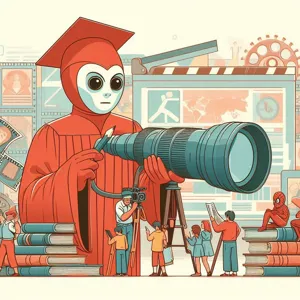
In the realm of cinema, certain films have transcended mere entertainment, igniting dialogues that challenge societal norms and foster cultural empathy. These case studies serve as powerful reminders of the medium’s ability to connect us across diverse backgrounds, prompting audiences to reflect on their own beliefs while considering the experiences of others.
One notable example is *Schindler’s List* (1993), directed by Steven Spielberg. This harrowing portrayal of the Holocaust not only sheds light on the atrocities of World War II but also serves as a catalyst for discussions about morality, humanity, and the responsibilities we hold towards one another. Its visceral storytelling compels viewers to confront uncomfortable truths, ultimately fostering a deeper understanding of Jewish history and the importance of remembrance.
Another film that sparked significant cultural conversations is *Black Panther* (2018), which celebrates African culture while exploring themes of identity, colonialism, and social justice. The film’s groundbreaking representation of Black excellence and its nuanced depiction of the fictional African nation of Wakanda prompted widespread dialogue about race, empowerment, and the portrayal of African narratives in mainstream media. Audiences not only embraced its entertainment value but also engaged in discussions about representation, equity, and the importance of diverse storytelling in Hollywood.
*Parasite* (2019), a South Korean film directed by Bong Joon-ho, further exemplifies the power of cinema to provoke thought and discussion. By intricately weaving themes of class disparity and social stratification, *Parasite* challenges viewers to confront their own biases and perceptions of wealth. The film’s unexpected twists and poignant commentary on economic inequality sparked global conversations about privilege and the human condition, making it a landmark film in both South Korean cinema and international discourse.
These case studies illustrate how films can serve as mirrors reflecting societal issues, fostering cultural empathy through shared narratives. They invite audiences to engage with perspectives different from their own, bridging gaps of understanding and promoting a more inclusive dialogue. As we explore the cinematic journeys that spark these conversations, we are reminded of the profound impact that storytelling can have on our collective consciousness.
8. The Psychology of Empathy in Viewing Experiences
The psychology of empathy in viewing experiences plays a pivotal role in how films resonate with us and shape our understanding of diverse cultures. When we sit down to watch a movie, we are not merely passive observers; we engage in a complex emotional process that allows us to step into the shoes of characters whose lives may be vastly different from our own. This immersive experience invites us to explore their fears, joys, and struggles, fostering a deep sense of connection that transcends geographical and cultural boundaries.
Research in psychology reveals that empathy is a powerful force in human interaction. When we watch a film, our brains activate mirror neurons, which are responsible for mimicking the emotions and actions of others. This neurological response helps us to feel what the characters feel, making their experiences more relatable and real to us. For instance, a film that depicts the harsh realities of life in a war-torn country can evoke profound feelings of compassion and understanding, prompting viewers to reflect on their own privileges and challenges.
Moreover, films often employ storytelling techniques that elicit emotional responses, such as relatable characters, compelling narratives, and evocative cinematography. These elements combine to create a rich tapestry of human experience, allowing audiences to engage with themes of love, loss, resilience, and hope. As we connect with these stories on an emotional level, we begin to dismantle preconceived notions and stereotypes about different cultures, fostering a greater understanding and acceptance.
In essence, the psychological journey we embark on during a film can be transformative. It encourages us not only to empathize with the characters on screen but also to cultivate empathy in our daily lives. By experiencing the world through the lens of others, we can nurture a more compassionate society, one film at a time. As we delve into cinematic journeys, we find that empathy is not just a fleeting emotion but a lasting bridge that connects us to humanity itself.
9. How Documentaries Promote Cultural Understanding
Documentaries have a unique power to transcend the boundaries of language, geography, and cultural differences, serving as a bridge that connects viewers to the diverse tapestry of human experiences. Unlike fictional films, which often rely on scripted narratives, documentaries present real stories, engaging with genuine individuals and communities. This authenticity fosters a sense of empathy, allowing audiences to step into the shoes of others and grasp the nuances of their lives.
Through immersive storytelling, documentaries shine a light on the complexities of various cultures, often highlighting issues of social justice, environmental concerns, and historical contexts that shape the lives of people around the world. For instance, a documentary that follows a group of indigenous people fighting for their land rights not only informs viewers about their struggles but also humanizes their plight, encouraging audiences to feel compassion and solidarity.
Moreover, the art of documentary filmmaking frequently incorporates firsthand accounts, interviews, and raw footage, creating a visceral experience that resonates deeply with viewers. This approach not only educates but also sparks conversations, prompting audiences to reflect on their own lives and the world around them. As viewers gain insight into different cultural practices, traditions, and challenges, they develop a richer understanding of the global community, fostering a sense of interconnectedness.
In a world that often feels divided, documentaries act as a reminder that despite our differences, we share common hopes, dreams, and aspirations. They challenge stereotypes and dismantle preconceived notions, encouraging viewers to engage critically with the narratives presented. Ultimately, by promoting cultural understanding through compelling visual storytelling, documentaries play a pivotal role in cultivating empathy and inspiring positive change in our increasingly interconnected world.
10. The Role of Film Festivals in Celebrating Diverse Narratives
Film festivals serve as vibrant platforms that celebrate and elevate diverse narratives, offering a unique space where stories from various cultures can shine. These events not only showcase films that might otherwise remain unseen but also foster an environment of cultural exchange and understanding. As attendees walk the bustling festival grounds, they are greeted by a rich tapestry of voices, each film a window into the lives, struggles, and triumphs of people from different backgrounds.
From the glitzy premieres in major cities to intimate screenings in local community centers, film festivals play a crucial role in curating content that reflects the multifaceted nature of human experience. They often highlight underrepresented voices, giving filmmakers from marginalized communities the opportunity to share their stories on a broader stage. This approach not only enriches the cinematic landscape but also invites audiences to engage with perspectives that challenge their own.
Moreover, panel discussions and workshops hosted during these festivals further enhance cultural empathy, as filmmakers, critics, and enthusiasts gather to discuss the nuances of storytelling and representation. These dialogues encourage attendees to reflect on their own biases and preconceived notions, fostering a deeper understanding of the complexities of different cultures.
In an era where global connectivity is at our fingertips, film festivals are essential in driving conversations about social justice, identity, and community. They remind us that, while our experiences may differ vastly, the emotions and themes we encounter in stories—be it love, loss, or resilience—are universally shared. By celebrating these diverse narratives, film festivals not only entertain but also educate and inspire, ultimately creating a more empathetic world through the power of cinema.
11. Challenges of Representing Cultures in Film
The challenges of representing cultures in film are as complex as the cultures themselves. Filmmakers often tread a delicate line between authenticity and artistic interpretation, with the risk of oversimplifying or misrepresenting the rich tapestries of diverse societies. One of the primary hurdles is the temptation to rely on stereotypes, which can lead to reductive portrayals that fail to capture the nuances of a culture. This not only does a disservice to the rich histories and traditions of the people being depicted but also perpetuates harmful narratives that can shape public perception.
Moreover, the cultural lens through which a story is told is critical. A film made by someone from within the culture may resonate differently than one crafted by an outsider. Filmmakers must navigate the intricacies of cultural appropriation, seeking permission and collaboration from community members to ensure their stories are told with authenticity and respect. This often requires building trust and engaging in meaningful dialogue to understand the culture from the inside out.
Additionally, logistical challenges come into play when filming in authentic settings. The need to accurately portray language, customs, and everyday life can require extensive research and sensitivity to local practices. Filmmakers might also face pushback from communities wary of how their stories will be represented on screen, leading to tensions that can complicate production.
In the end, the challenge lies not just in capturing a culture authentically but in doing so in a way that fosters understanding and empathy. When filmmakers embrace these challenges and prioritize authenticity, they create cinematic experiences that resonate deeply and encourage audiences to reflect on their own cultural narratives, ultimately enriching the global conversation around cultural empathy.
12. Engaging with Films: Tips for Cultivating Empathy
Engaging with films offers a unique avenue to cultivate empathy and deepen our understanding of diverse cultures and experiences. To maximize the emotional and intellectual impact of your viewing, consider the following tips:
**1. Choose Diverse Narratives:** Start by selecting films that represent a variety of cultures, perspectives, and experiences. Look beyond mainstream cinema; explore independent films, foreign language films, and documentaries that highlight stories often overlooked. By immersing yourself in these narratives, you open the door to new viewpoints and lived experiences.
**2. Watch with Intent:** Approach each film with a mindset of curiosity and openness. Pay attention to the characters’ emotions, motivations, and challenges. Resist the urge to judge or dismiss unfamiliar customs or behaviors, and instead, seek to understand the context in which they exist. This intentional viewing can foster a deeper connection to the story being told.
**3. Reflect and Discuss:** After watching a film, take the time to reflect on your feelings and thoughts. Consider journaling your insights or discussing them with friends or online communities. Engaging in dialogue allows for shared perspectives and can help unpack complex themes, making the experience richer and more meaningful.
**4. Research Cultural Context:** Sometimes, a film may touch on cultural nuances or historical events that require further exploration. Take the initiative to research the background of the film’s setting, its cultural significance, or the director’s vision. This additional knowledge can enhance your understanding and appreciation of the film, allowing you to engage with it on a more profound level.
**5. Challenge Your Comfort Zone:** Don’t shy away from films that make you uncomfortable or challenge your preconceptions. Often, these films can provide the most significant opportunities for growth and understanding. Embrace the discomfort as a vital part of the empathetic journey, allowing it to expand your worldview.
By consciously engaging with films through these practices, you can harness the power of cinema to cultivate empathy, bridging gaps between cultures and fostering a more profound appreciation for the richness of the human experience. Ultimately, film can serve as a powerful tool for connection, understanding, and social change, inviting us to step into the shoes of others and view the world through their eyes.
13. The Future of Film in Promoting Cultural Awareness
As we stand on the brink of a new era in filmmaking, the potential for cinema to promote cultural awareness has never been more pronounced. The future of film is poised to serve as a powerful conduit for empathy, understanding, and connection among diverse cultures. With advancements in technology, distribution, and storytelling techniques, filmmakers are now equipped with a vast array of tools to bring untold stories to life, fostering a deeper appreciation for the richness of human experiences across the globe.
In this evolving landscape, the rise of diverse voices in filmmaking is pivotal. As more creators from varied backgrounds gain access to resources and platforms, we can expect an influx of narratives that challenge stereotypes and illuminate the complexities of different cultures. These films, often born from personal experiences, offer audiences a glimpse into the lives of others, allowing them to walk in someone else’s shoes—if only for a couple of hours.
Moreover, the integration of virtual and augmented reality technologies into film has the potential to take cultural immersion to unprecedented heights. Imagine watching a documentary that not only showcases the vibrant traditions of a distant land but also allows you to virtually step into that environment, interact with locals, and experience their customs firsthand. Such innovations can break down barriers and foster a sense of global community, cultivating empathy in ways that traditional storytelling may struggle to achieve.
As streaming platforms continue to dominate the film industry, they also play a crucial role in promoting cultural awareness. With a vast library of international films at viewers’ fingertips, audiences are encouraged to explore narratives outside their usual preferences. Curated collections highlighting underrepresented voices can spark interest and prompt conversations around cultural differences and shared human experiences.
Ultimately, the future of film in promoting cultural awareness lies in its ability to inspire dialogue and reflection. By embracing the multiplicity of human stories and prioritizing authenticity in representation, filmmakers have the unique opportunity to not only entertain but also educate and unite us in our shared humanity. As audiences increasingly seek out emotionally resonant content, films that champion cultural empathy are not just a trend; they are essential for fostering understanding and appreciation in an increasingly interconnected world.
14. Conclusion: The Transformative Power of Cinema
In conclusion, the transformative power of cinema extends far beyond mere entertainment; it is a profound medium that fosters cultural empathy and understanding. Films have the unparalleled ability to transport us to different worlds, allowing us to walk in the shoes of those whose experiences are vastly different from our own. As we witness the struggles, triumphs, and everyday lives of characters from diverse backgrounds, we are invited to forge connections that transcend geographic and cultural boundaries.
Cinema serves as a mirror reflecting the complexities of the human experience, shedding light on societal issues, traditions, and emotions that might otherwise remain obscured. Whether it’s through a gripping narrative set against the backdrop of historical events, a heartwarming tale of community and resilience, or an artful exploration of identity and belonging, films can evoke empathy and provoke thoughtful dialogue.
Moreover, the communal experience of watching a film—be it in a theater, at home, or through virtual gatherings—creates a shared space for discussion and reflection. It encourages us to engage with one another, fostering a deeper understanding of each other’s perspectives and cultures. In a world that often feels divided, cinema acts as a bridge, reminding us of our shared humanity.
As we continue to explore the vast landscape of global cinema, let us embrace its potential to enlighten, challenge, and inspire. By engaging with films that celebrate diversity and highlight cultural narratives, we not only enrich our own lives but also contribute to a more empathetic and interconnected world. So, the next time you settle in for a movie night, remember that you’re not just escaping into a story; you’re embarking on a cinematic journey that has the power to transform hearts and minds.
15. Recommended Viewing List for Cultural Exploration
### 15. Recommended Viewing List for Cultural Exploration
Embarking on a cinematic journey is one of the most enriching ways to gain cultural empathy and understanding. Films have the unique ability to transport us into the lives of others, allowing us to experience their joys, struggles, and perspectives. Here’s a carefully curated list of films that offer profound insights into diverse cultures, each with its own story waiting to be discovered.
1. **”The Motorcycle Diaries” (2004)** – This biographical film follows a young Ernesto “Che” Guevara as he travels through South America. It highlights the social injustices and rich cultures of the continent, awakening a sense of empathy and activism within the viewer.
2. **”City of God” (2002)** – Set in the favelas of Rio de Janeiro, this powerful film portrays the lives of its residents amidst violence and poverty. Its raw storytelling presents both the beauty and brutality of life, offering a glimpse into a world often overlooked.
3. **”A Separation” (2011)** – This Iranian drama delves into the complexities of family, morality, and social issues in contemporary Iran. The film’s nuanced characters and gripping narrative encourage viewers to reflect on their own beliefs and values.
4. **”The Intouchables” (2011)** – A heartwarming French film that tells the story of an unlikely friendship between a quadriplegic aristocrat and his caregiver from the projects. It beautifully showcases the power of human connection across cultural and socioeconomic divides.
5. **”Roma” (2018)** – Set in 1970s Mexico City, this semi-autobiographical film by Alfonso Cuarón tells the story of a domestic worker amidst political turmoil. With its stunning visuals and intimate storytelling, it invites viewers to appreciate the everyday lives of those often taken for granted.
6. **”Pan’s Labyrinth” (2006)** – This Spanish-language fantasy film intertwines the harsh realities of post-Civil War Spain with a rich world of mythical creatures. It serves as a poignant commentary on innocence lost and the impact of war on society.
7. **”Parasite” (2019)** – This South Korean masterpiece explores themes of class disparity and social stratification through the lens of dark humor and thriller elements. Its global acclaim highlights the universal relevance of its message.
8. **”Burning” (2018)** – A thought-provoking South Korean film that delves into class issues, jealousy, and the existential questioning of one’s purpose. Its slow-burn narrative invites deep reflection on social stratification and human connection.
9. **”The Farewell” (2019)** – This touching film, based on a true story, explores the cultural differences surrounding family dynamics and the concept of truth in Chinese and American cultures. It beautifully captures the bittersweet nature of love, loss, and familial obligations.
10. **”Crouching Tiger, Hidden Dragon” (2000)** – A visually stunning martial arts film set in ancient China, it intertwines themes of honor, love, and sacrifice. Beyond its breathtaking action sequences, it offers a glimpse into the cultural values of loyalty and tradition.
11. **”The Kite Runner” (2007)** – Based on Khaled Hosseini’s beloved novel, this film tells a story of friendship and redemption set against the backdrop of Afghanistan’s tumultuous history. It highlights the power of forgiveness and the impact of cultural heritage.
12. **”
As we conclude our exploration of cultural empathy through film, we hope you’ve gained a deeper appreciation for the power of cinema to bridge divides and foster understanding. Each movie is a window into the lives, struggles, and triumphs of people from different backgrounds, inviting us to step into their shoes and see the world through their eyes. By engaging with diverse narratives, we not only enrich our own perspectives but also cultivate compassion and connection in an increasingly fragmented society. So, whether it’s a poignant documentary, a heartwarming drama, or a thought-provoking foreign film, let your next cinematic journey be a catalyst for empathy and dialogue. We encourage you to share your favorite films that resonate with these themes, as together, we can continue to celebrate the art of storytelling and its potential to unite us all. Happy viewing!

